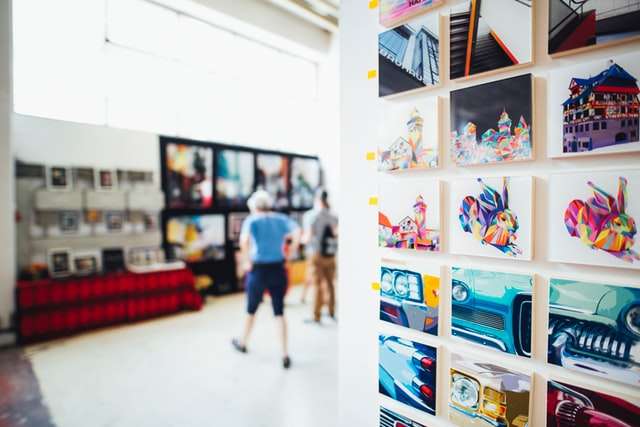There are many digital art terms, and each refers to a specific function within the world of digital art. It is important for any individual interested in digital art to understand these terms and their meanings, as they will come up in most cases during the creative process. The following list will explain some of the most commonly used digital art terms for beginners.
Description: Digital art is a form of artwork that uses software rather than traditional tools, such as paint and canvas. Digital programs allow artists to manipulate images and create new ones using pre-existing ones.
History: As computers have become more commonplace in society, so has digital art. The term “digital” was first used by Professor Joseph Weizenbaum at MIT in 1965 in reference to computer-based art and literature.
Digital media: Digital media refers to all forms of computer-based communication, including images, video and sound.
Vector graphics: Vector graphics are composed of lines that originate from a starting point and can be manipulated in any fashion without losing quality. This differs from bitmap graphics, which use pixels with an assigned value for color or texture to create an image.
Vector Image Editor: A vector image editor is a software program that allows users to create vector graphics through drawing shapes based on mathematical algorithms.
The digital art community is one of the fastest growing and most exciting places to be in the art world. Due to this, a new vocabulary has developed to describe the techniques, tools and programs that people use.
The digital art community is essentially made up of two groups: graphic designers and fine artists. The former use computers as an extension of their skillsets, while the latter may or may not be able to use computers at all. This article will mainly focus on the terminology used by graphic designers, but many of these terms can be applied to fine artists as well.
The following terms will be used throughout this course:
Bitmap: A picture made up of pixels. They are often square, but don’t have to be.
Colorspace: The set of colors that a file can contain. RGB is the colorspace of most digital cameras, CMYK is the colorspace of most commercial printing presses, and Lab is the colorspace of Photoshop and GIMP.
The Main Elements Of Digital Art
Digital art consists of two main elements: color and line. Colors are added to a picture using a variety of techniques, including solid colors and gradients. The line element can come in many different forms, from simple straight lines to complex vector shapes or fine hair-like strokes. Not all digital art uses both elements equally, but most use at least one of them.
Additional Elements Of Digital Art
Digital artists also use a variety of other materials to produce their work. Patterns can be used for background images or textured overlays for certain portions of an image. They are also sometimes used as a repeating pattern in the foreground or background, or as a texture layer over an object’s surface.
Contrast can be created by using different colors, transparency levels or values (lightness/darkness). Textures
Digital art is an incredibly broad term. There are many specializations within the field of digital arts and so because of that you will definitely want to start out with a general idea of what digital art is, who creates it and why.
There are many different types of artists, or users, in the digital art world. The most common are the graphic designers, artists and computer graphics programmers, who all use digital art for their own purposes.
Digital art can be created by professions in the fields of computer graphics, design and illustration. The user would go through several steps to create a piece of digital art. The first step is to have an idea or concept that you want to share with others. Then a rough sketch would be made which could be on paper or in other mediums such as pencils or paint. Once the artist is satisfied with their drawing they would then scan it into the computer so they can clean up any errors they might have made while sketching. After scanning into the computer software such as Adobe Photoshop would then be used to add color and texture to give it a more realistic look. This process is known as rendering which creates the final form of their work.”
Intentionally or not, it is the goal of digital art. Whether the medium is paint on canvas or pixels on a screen, the goal is to replicate something that resembles reality in an artistic way.
This is where you can better appreciate perspective and lighting, and create more lifelike pieces of art. This is also where you will begin to take your composition and use of color more seriously as well.
The tools mentioned above are excellent for creating realistic images, but it can be difficult to really understand them when using them. Understanding these tools thoroughly will help you become a better artist overall.
Using the same software and supplies, a digital artist can create two very different pieces of art. The software is the same, but how it is used to produce the art is very different. Understanding the difference between the two types of digital artwork will help you be more discerning when creating your own work.
The first type of digital art is called “raster” or “pixel.” The image is made up of many tiny colorful dots called pixels. Raster art has a distinct look because each pixel on your screen is added by clicking on it individually and choosing that color from your palette or combining it with another color from your palette. For this reason raster art can be time consuming to create, as it may take a while to get each pixel just right.
Raster art can also be referred to as bitmap images, which are created by mapping sets of data into bitmaps (or rasters) for display. Images that use this process are considered raster graphics because they are composed of fixed-size dots called pixels. Each pixel is a colored square that can be used to display text or an image.
The following terms are important to the study of digital art. You may have come across these terms before and wondered what they mean. The long-standing tradition of artists is to use a special vocabulary to describe their work. This special vocabulary helps to define the role of the artist in the world and separates them from the people who consume art. It also differentiates between practitioners of similar media and fosters a sense of community between artists.
Knowledge of this vocabulary is important for both critics and artists as it helps them communicate ideas about art clearly. It can also be useful for art history students as it allows them to understand the historical context in which artistic movements emerged.
Some key terms:
-Digital art is an umbrella term used to describe any type of art created with a computer, including 2D and 3D forms such as painting, photography, sculpture and animation.
-Artists who work with digital mediums are called digital artists or digital designers.
-The term “digital” has been used since the 1960s but did not become common until computers became available for home use in the late 1980s. When used as an adjective, “digital” refers to the processes involved in making an artwork using a computer, such as editing, altering and layering



